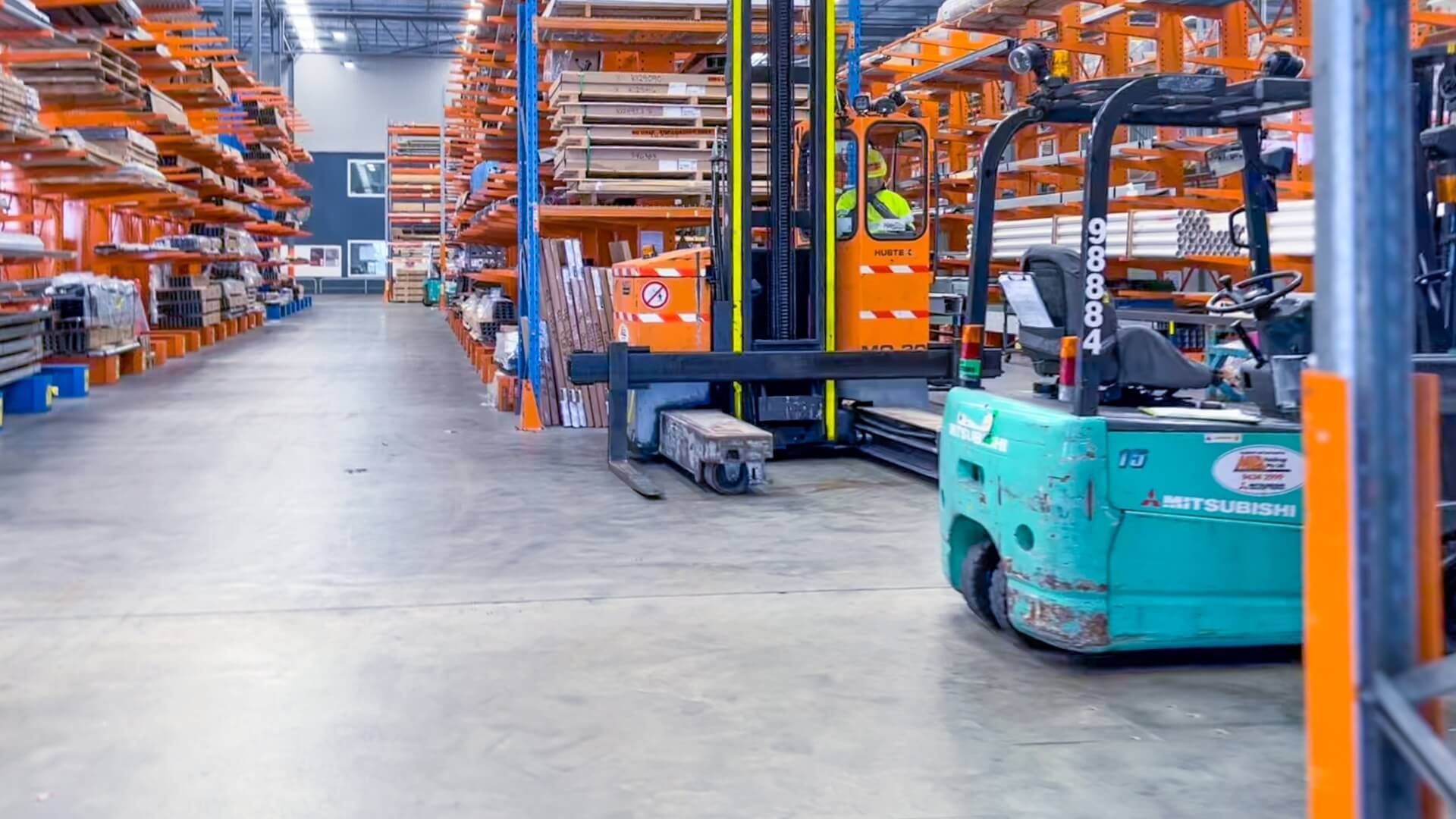Closing the Warehouse Skills Gap in WA
Walk your shop floor at 6.45 AM and you can feel it. The pallet jack moves, but it drags like it has a missing wheel. Nothing dramatic, just enough resistance to slow the whole shift. That is what a skills gap looks like day to day. One small missing or shaky skill multiplies friction across safety, accuracy and throughput.
This guide focuses on the skills for a warehouse worker that matter on the floor, not on paper. You will find quick checks to run today, training that actually sticks, process tweaks to remove friction, and hiring advice targeting real warehouse competencies.
If you need screened, work-ready people and ongoing support, our warehouse recruitment team is ready to help.
Where The Gap Actually Appears On Shift
Look for these patterns in a fast-paced environment:
- Inventory accuracy falters. Cycle counts do not match receipts. Inventory records drift, and you struggle to maintain accurate stock levels. Pick variance creeps and rework grows.
- Equipment operation is hesitant. LF licence on paper, but low confidence in tight aisles. Pallets snake, corners are slow, and pallet jacks are overloaded.
- WMS habits slip. Barcode scanners get skipped to “save time”. Inventory management systems lose traceability, and accurate stock levels become guesswork.
- Safety shortcuts appear late in the day. Safe lifting is fine at 8 AM, but standards drop at 3 PM in a physically demanding environment.
Spot the specific skill behind each symptom, reset the standard, and retrain until it sticks. Do not throw overtime at a skills problem, diagnose at the source and correct it on the floor.
A 30-Minute Skills Health Check You Can Run Today
Block half an hour. Sample what matters to smooth operations.
- Ten-pick audit. Watch a picker complete ten orders in a fast-paced area. Track scan compliance and accuracy.
- Safe-lift spot check. Observe manual tasks against your safety protocols. Coach immediately.
- Forklift confidence loop. For forklift drivers, conduct one standard manoeuvre with a spotter in live aisles. Note line choice, pauses, and observation.
- WMS drill. Document the exact steps for receiving, putaway, picking, and dispatch. If there are three versions, standardise one.
- Radio check. Conduct a one-minute call and response to confirm effective communication and concise instructions.
Anything below target is a discrete skills gap. Prioritise that item, run a short refresher, and re-measure next week to confirm the improvement.
Close The Gap With Training That Sticks
Make training part of warehouse operations, not an off-site chore.
- Micro-drills. Five-minute scan-gun warm-ups before first picks.
- Buddy runs. Pair new LF operators with a confident driver for tight-aisle practice.
- Toolbox Talks. Use ready-to-run
Toolbox Talks to reinforce safety protocols, equipment operation, and communication skills without heavy prep.
- Support formal pathways. For larger gaps, use recognised programs that build warehouse skills, inventory management, and basic supply chain management literacy. Certificate III or IV units in Supply Chain Operations help warehouse workers play a more confident role with WMS tasks and stock levels.
- Promote continuous improvement. Capture one lesson per shift and roll it into next week’s pre-start. Small, regular improvements build new skills and enhance productivity without disrupting the work environment.
Remove Process Friction So Skills Can Shine
Sometimes, the people are capable. The issue is that the workflow is getting in their way.
- Label for speed. Clean, consistent shelf labels with location, SKU, and barcode.
- Ergonomics. Check holsters, strap scan guns, rotate batteries, and match gloves to barcode scanners.
- Flow tweaks. Set short replen windows so replen and pick teams do not collide.
- Confidence aids. Blue-spot lights or cameras on forklifts help newer drivers build smooth habits.
These tweaks lower cognitive load, so attention to detail rises, inventory management improves, and customer satisfaction follows.

Hire Real Competence, Not Just “Years Of Warehouse Experience”
“Three years’ experience” can still hide gaps in core competencies. Write ads and interviews around observable warehouse job skills and warehouse competencies.
Competencies to list and test
- Pick accuracy at or above 98% on a ten-pick test
- 100% scan compliance on audited runs using barcode scanners
- LF forklift licence and demonstrated control in tight aisles
- Safe manual-task technique that follows safety protocols
- WMS basics across receive, putaway, pick, and dispatch
- Clear radio comms, teamwork, and problem-solving skills under pressure
- Organisational skills to keep the pick face tidy and maintain accurate stock levels
How IRP supports you
IRP validates tickets, checks practical competence, and matches people to your workflows. With post-placement support, your Account Manager keeps performance steady after day one. Explore Grow Your Team, and the iCare programme for more information on working with us. If training alone does not close the gap, register a vacancy and request competency-based screening.
Keep Skills By Showing The Ladder
People stay where they see progress and a successful career. Map simple, real pathways:
Pick Packer → Storeperson → Inventory Controller → Team Leader → Supervisor.
Link training steps to clear pay bands. Recognise warehouse workers’ ability to adopt new skills and support them with fair rosters in a physically demanding role.
Quick Wins For This Month
- Run the 30-minute health check and share one finding in the pre-start.
- Add a weekly Toolbox Talk on manual tasks, WMS accuracy, or equipment operation. Download a free Toolbox talk today.
- Standardise one WMS workflow with screenshots and post it at the pick face.
- Re-slot the five slowest SKUs that cause extra reach and twist.
- Audit pallet jacks and scan-gun batteries. Replace or service where needed.
- Update job ads to list key skills, not just “experience”.
Your Next Step
If you need reliable, work-ready warehouse staff or support to map skills to roles, our Warehousing & Distribution team can help. Start with a weekly Toolbox Talk to lift standards, then register a vacancy if you need trained people now. Explore how we support you after placement with Grow Your Team and Post Placement Support.
If you are looking for your next role or if you require blue-collar recruitment and a skilled employment agency to meet your production requirements, reach out to IRP today.
FAQs
What are the 4 main functions of a warehouse?
Receiving, putaway and storage, picking, and dispatch. Strong inventory management, tidy layouts, and communication skills across teams keep supply chain activities flowing and stock levels accurate.
What are good skills for warehouse jobs?
Problem-solving, teamwork, attention to detail, equipment operation, communication skills, WMS use, time management, and adaptability in a fast-paced environment. These essential skills improve inventory records, enhance productivity, and support customer satisfaction.
What are the duties of a warehouse worker?
Check and receive goods, store safely, pick and pack accurately, use warehouse equipment correctly, keep inventory records current in the WMS, follow safety protocols, support stock takes, and communicate clearly with supervisors and teammates.











